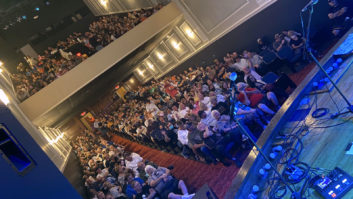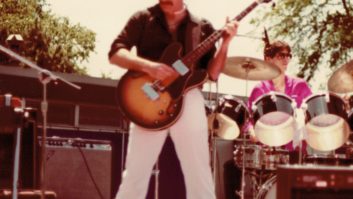
A few weeks ago, a bit of a shock wave went through the live sound community when Yamaha announced that it would be discontinuing its CL Series of mixing consoles, and that QL Series desks will also be retired pending depletion of supply. Production of both Series is scheduled to end by March 2025. I have to confess, I’m sad.
Introduced more than 12 years ago—which is more than a lifetime in the world of digital audio—the CL Series consisted of three models priced from just under $17k to just over $30k, while the QL Series (introduced a year later) offered two models at street prices around $10k (QL1) and $16k (QL5).
Their popularity was born out of the fact that they were easy to use, could cover a wide range of applications, sounded good, and offered a wide palette of processing, including “premium” plug-ins, among which was the eminently useful auto mixer from Dan Dugan Sound Design. Dante-compatibility and expansion card slots allowed the I/O to be expanded, and the operating systems were virtually identical, so if you learned how to use a QL1, you could easily make the jump to a CL5.
Looking through my archive of show files, I found CL files dating back to May, 2013 and QL files dating back to 2015(!). We may as well have been living on a different planet when these desks were new. When I reviewed the QL5 in the October 2015 issue of Mix, I noted that some of the “pros” included a compact footprint, comprehensive onboard processing and built-in Dante networking, while “cons” included a limited number of controls in the selected channel section and a lack of dedicated DCA faders. I’d later learn—without studying the manual or annoying the daylights out of a systems tech with more knowledge of the system than I—how to create a custom fader layer for the QL5 that allowed me to have 8 DCA faders and 24 input faders under my fingers without paging.
Mix Live Blog: A Tale of Two Consoles
What I didn’t know at the time was that I’d be able to open a QL file on a CL desk, and vice versa, even without file translation software—a slick move on the part of the manufacturer. True, the effect racks didn’t always translate between CL and QL console files, but most of the important settings did, channel count notwithstanding.
The other thing I wouldn’t appreciate about these desks until several years later was the fact that even as Yamaha made firmware revisions to both desks, my older files never became obsolete. I don’t ever recall loading a thumb drive into a CL or QL, looking for a show “starter” file, then finding out that the file was unavailable due to a firmware incompatibility. This is a big deal for engineers who don’t tour with consoles and may be subject to “console du jour.” I hope the theme continues with the newer desks.
The QL and CL Series yield to Yamaha’s more recent DM3, DM7 and RIVAGE Series of digital mixers and rack I/Os (“Rio”). The DM7 Series is priced similarly to the CL desks, but RIVAGE systems are clearly aimed at professionals with deeper pockets. At the other end of the spectrum, the DM3 provides a small 8+1–fader work surface and sells for a hair under $3k. That leaves a bit of a hole in the $3k to $10K price range, so I can’t help but wonder if there’s a DM5 in the works.
All are Dante-enabled, making them compatible with the existing range of Yamaha Rio stage boxes, as well as the newer “D2” second generation of Rio, so audio houses making the transition to the newer systems can still use part of their existing infrastructure. What’s more surprising is that the Gen 2 Rio units are compatible with older QL and CL Series desks—so don’t count them out just yet.







